Woman III Unit 6 Art Presentation
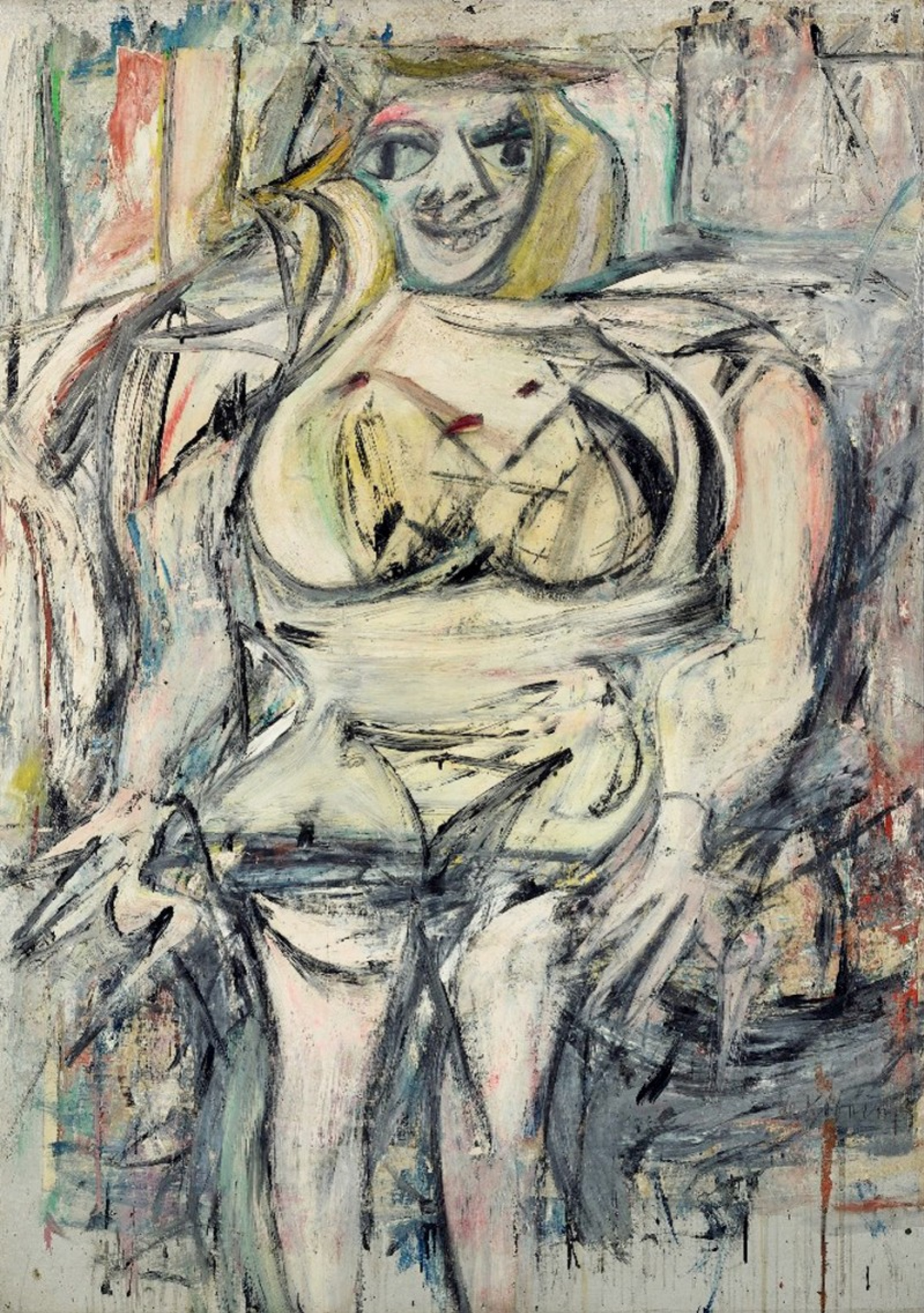
Link to my Google Slides presentation:
https://docs.google.com/presentation/d/1sXp2IRmdGFoZ6ACPQcu_5wHAljANcJXVINY9JyVWdqk/edit?usp=sharing
Presentation handout:
Willem de Kooning’s Abstractionism in Woman III (1953)
Biography:
- 1904-1997 born in Netherlands
- Attended Rotterdam Academy of Fine Arts and Techniques for eight years
- 1926 de Kooning entered the United States as a stowaway and eventually settled in Hoboken, New Jersey where he supported himself as a house painter
- 1928 de Kooning began to paint still life and figure compositions
- 1930s he began exploring abstraction using biomorphic shapes and simple geometric compositions
- He was a leading exponent of Abstract Expressionism, particularly action painting
- Action painting is the spontaneous application of vigorous, sweeping brushstrokes and the chance of dripping and spilling paint onto the canvas
- 1938 de Kooning met Elaine Fried whom he married in 1943
- They heavily influenced each other’s art
- De Kooning was awarded many honors in his lifetime, including The Presidential Medal of Freedom in 1964
Early Works:
- Two Men Standing, Man
- 1938 de Kooning embarked on a series of sad, staring male figures
- Integration with spatial planes, lines, and time
- Seated Figure (Classic Male)
- 1941-1943 he struggled with classicism, the following of harmony, restraint, and adherence to standards of form and craftsmanship
- Shown through the torso
- Reducing it to an optical illusion to symbolize it making no sense in the modern world
- 1941-1943 he struggled with classicism, the following of harmony, restraint, and adherence to standards of form and craftsmanship
- Elegy
- 1939 early abstraction
- He takes things out, transforms them, and returns them to art on his own terms
- Surrealism – explore the creative potential of the unconscious mind
- Pink Angels
- 1945; done in the wake of World War II
- Evolution from figuration to abstraction
- Anatomical forms that have been torn apart or are in the process of colliding
- Possibly an eye or a part of a fish head in the bottom left corner, and a circle and rectangle in the bottom center next to a crab-like form in the bottom right
Woman III
- Savagely applied pigment
- Use of colors that seem randomly distributed on his canvas
- Reveals a woman all too congruent with some of modern man’s most widely held sexual fears
- Toothy snarls, overripe, pendulous breasts, vacuous eyes, and blasted extremities symbolizes Freudian insights
- Women were too far from the stereotypical image of the submissive American Housewives
- More realistic, despite abstractness
Critical Reception:
- Woman I–VI caused a sensation with its violent imagery and impulsive, energetic technique
- More of a chaotic effect than imitating the real world
- Maybe a chaotic representation because of his tensed relations with his mother growing up influencing his perception of all women
- Some saw the painting as a betrayal, a regression to an outmoded figurative tradition
- Others have called it misogynistic, interpreting it as objectifying and violent
- de Kooning himself said “Beauty becomes petulant to me. I like the grotesque. It’s more joyous”

Work Cited
Exhibit-E.com. “Biography – The Artist.” Willem de Kooning Foundation. Accessed February 25, 2020. https://www.dekooning.org/the-artist/biography.
Grunenberg, Christoph, Celia Stahr, and Joan Marter. “De Kooning Family.” Grove Art Online, 2003.https://www-oxfordartonline-com.ezproxy.lib.davidson.edu/groveart/view/10.1093/gao/9781884446054.001.0001/oao-9781884446054-e-7000021873#oao-9781884446054-e-7000021873.
Sidelnikov, Eugene. “Woman III by Willem De Kuning: History, Analysis & Facts.” Arthive. Accessed February 25, 2020. https://arthive.com/willemdekooning/works/373906~Woman_III.
The Editors of Encyclopaedia Britannica. “Willem De Kooning.” Encyclopædia Britannica. Encyclopædia Britannica, inc., December 9, 2019. https://www.britannica.com/biography/Willem-de-Kooning.
Vogel, Carol. “Landmark De Kooning Crowns Collection.” The New York Times. The New York Times, November 18, 2006. https://www.nytimes.com/2006/11/18/arts/design/18pain.html.
“Willem De Kooning.” MoMA, 2017. https://www.moma.org/artists/3213?locale=en.
“Willem De Kooning Artworks & Famous Paintings.” The Art Story. Accessed February 25, 2020. https://www.theartstory.org/artist/de-kooning-willem/artworks/.
Bodies – reflection on image taken from Auschwitz
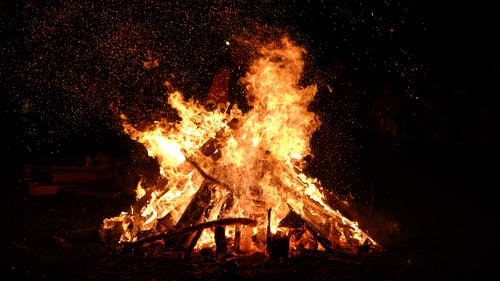
What am I doing with my body?
By Skylar McVicar
Looking at that picture
I feel sick
I feel nauseous
I wish I hadn’t seen it
I quickly turn away
Glad I could ignore it, forget it maybe
Never going to forget it really
My stomach is turning
So many bodies
So many limp bodies
So many limp, cold bodies
So many limp, cold, sad bodies
So many limp, cold, sad, ignored, beaten, deceived, disrespected, hopeless, dead
Dead bodies
The fire will warm them up
Fire is good, fire gives heat, heat gives health, heat makes food, food gives health
Good fire
Wait
Bodies by the fire
Dead bodies by the fire
Limp, cold, sad, ignored, beaten, deceived, disrespected, hopeless, dead bodies
By the fire
In the fire
In the fire
No
I can’t look
Turn back around
Turn your strong, warm, fed, healthy body back around
Don’t look
In the fire
The bodies are in the fire
Feeding the fire
Fueling the fire
The fire survives
The bodies don’t
The fire gets stronger
Remains strong
Because my body is turned
I am ignoring it
But by ignoring it, I am feeding the fire
Fueling the fire
My Jewish body is still fueling the fire
No
Turn your strong, warm, fed, healthy body back around
Toward the picture
Look at it
Feel sick
Feel nauseous
It is a blessing to have these feelings
To be alive and have these feelings
Use these feelings
It is time to fuel a different fire with my strong, warm, fed, healthy body
*This image was first seen in Auschwitz and is analyzed in my research paper

*I took this photo while at Auschwitz
Cremation of corpses at Auschwitz-Birkenau. This photograph was taken clandestinely by prisoners in the Sonderkommando. Poland, summer 1944. Provided by USHMM Photo Archives
“CREMATION OF CORPSES AT AUSCHWITZ-BIRKENAU.” United States Holocaust Memorial Museum. United States Holocaust Memorial Museum. Accessed April 1, 2020. https://encyclopedia.ushmm.org/content/en/photo/cremation-of-corpses-at-auschwitz-birkenau.
Unit 8 Protest through Painting Revision
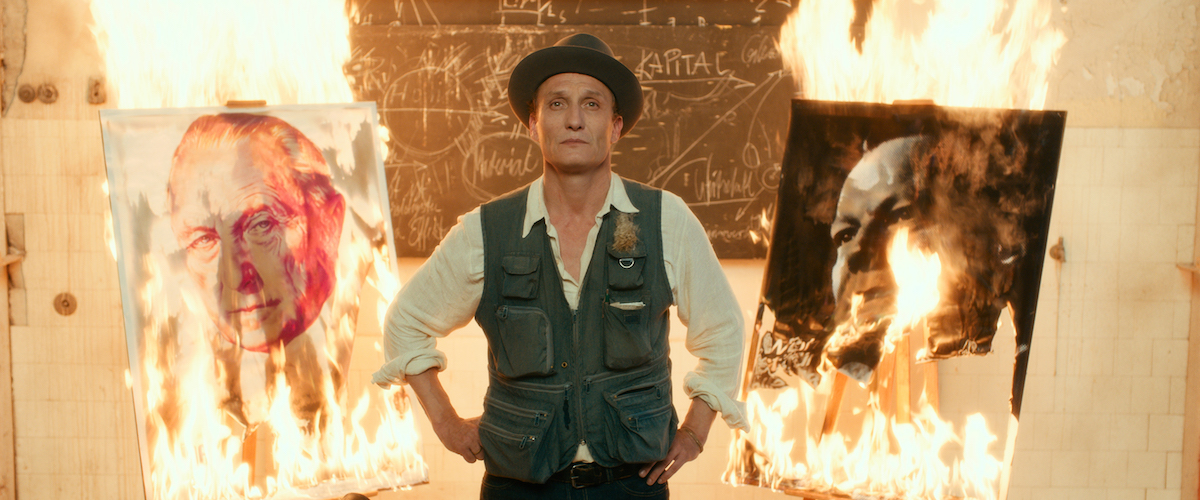
Both Kurt and Richter use painting as a medium to contemplate and investigate certain life happenings. These two artists could be representing reality using fantasy ideas in their work. In Never Look Away, Kurt paints as a type of therapy intentionally aimed to communicate the truth. However, Kurt never promotes his paintings in a way where they would effectively translate his overwhelming fear. Merely by creating this art, Kurt is pursuing the act of “making yourselves free” and “liberating the world.” His work is potentially dangerous because it is truthful. Kurt is willing to take this risk because “everything that’s true is beautiful.” Richter also uses his art to represent certain truths and situations that have occurred so the audience does not forget. For example, in Richter’s “October 18, 1977” collection, he shows the progression of a scenario by increasingly blurring the images in the series showing the frustration he has with the audience’s ignorance and lack of attention. Richter claims these paintings “can give us new insights” on the horrors of the past. Like Sontag, Richter emphasizes “we can’t simply discard or forget” the atrocities of the past and “we must try to find a way of dealing with it.”
Unit 7 Requiem Translation Debate Revision
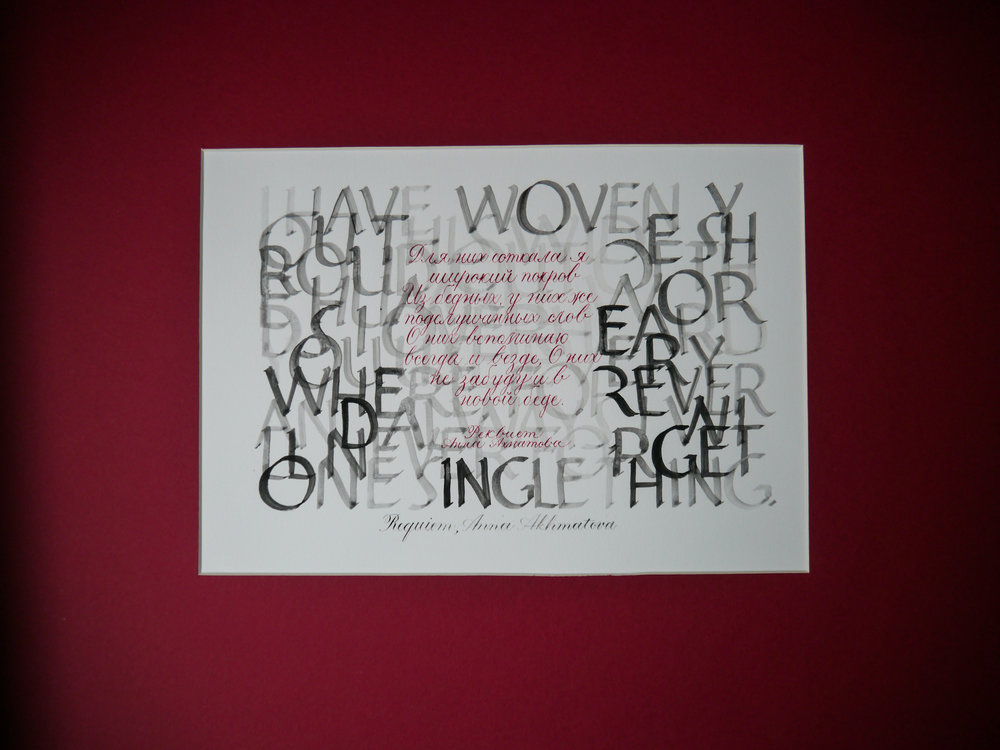
Personally, I chose Thomas’ translation because I liked the structure of the poem, the rhyme scheme was clearer, and the chosen word choice elicited stronger connotative associations for me than the Anderson translation. Emily Evans, on the other hand, chose the Anderson translation because she felt that the sentences flowed better and liked the poem portion, rhyme scheme, and the sentence structure better over Thomas’ translation. To her, Thomas’ writing style was odd in contrast. Similarly, Olivia Harper prefers the Anderson translation to the Thomas translation because she feels the translation is more organic. She likes how Anderson introduces the rhyme scheme later on in the translation to give readers time to adjust. This translation style made the translation seem more genuine and to more effectively communicate the message. After discussing the difference between the two translations, I can see both Emily’s and Olivia’s point regarding Anderson’s translation. It is really interesting how two translations of the same writing can be portrayed in ways that mean vastly different things to separate people. This relates back to the translation panel lecture in unit 2 when discussing changes in conceptual schemas.
Stalin’s Terror Poetry Lecture !&?
! The reason why poets, authors, scholars, and intellects were so highly monitored and regulated during The Terror was because poetry had the power to critique Stalin’s authority. If it reached and influenced the masses, then a massive uprising could occur. Thus, it was in Stalin’s best political interest to limit freedom of speech and press during The Terror.
? Did Stalin’s methods in The Terror influence Hitler’s methods in The Holocaust?
Unit 6 Snow’s Two Cultures: Science and Art Revision
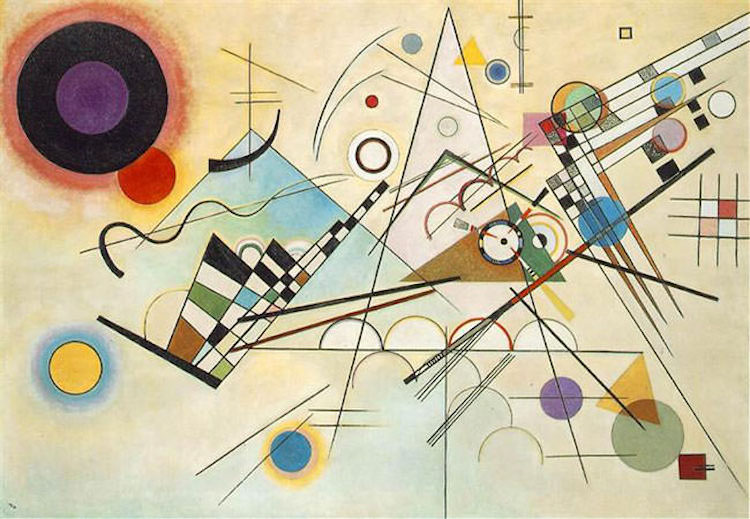
Snow’s “Two Cultures”
!) When first reading that “each of us is alone”(6) and “each of us dies alone”(6) under the scientific optimism section, I was reasonably confused. However, Snow persuaded me as to why this thought process makes sense. Sometimes, scientists must remove themselves and their emotions from a scientific experiment in order to eliminate any biases and outside influences. Thus, scientists are capable of assessing a situation, asking the necessary questions, and testing a hypothesis until it is “proved otherwise”(7). They hold onto hope that others would lose quickly. The ability to detach from a situation is important but can also be isolating and lonely.
?) Snow makes a convincing case pointing out why the number two is a dangerous number. He claims that two is the only number capable of creating factions and divisions (9). While this reasoning makes sense, it does not encompass the many answers that exist outside the obvious either/or outcomes. Applying this logic to current political situations is important in understanding why this us vs. them mentality creates divisions between races and cultures. Moreover, certain numbers carry different connotations in varying cultures throughout the world. For instance, Chinese culture regards the number four as an evil number. How can different beliefs surrounding numbers translate globally and influence scientific experiments and discoveries?
Top Siegfried’s Revolutionary Scientific Theories
– Evolution by natural selection
Top Hadhazy’s Experiments of All Time
-Ivan Pavlov Salivates at the Idea
Unit 5 History Through Archives and Bodies Revision
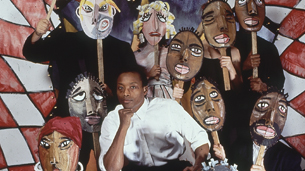
One particularly interesting aspect of Schneider’s “Performing Remains” article is her emphasis on archival collections as a primarily white and Western documentation of history. Because of her skepticism regarding what is included in archives, she leaves readers with a sense of uncertainty and doubt about the reliability of our historical sources. I am now wondering if archives are even important and helpful considering their heavy biases. Often times, an account of history is created relying solely on what is included in archives. This is dangerous because it allows the possibility for an incorrect report to be circulated. Additionally, Schneider emphatically communicates that “memory cannot be housed in a body and remain”(101), meaning that archives cannot accurately represent and document performances and other historically significant events. Since memory has an abundance of holes and is different for everyone, it is not a dependable source of information. An intriguing part of Birns’ article “Ritualizing the Past: Ralph-Lemon’s Counter-Memorials” is his stress on ritualizing “the past, not monumentalizing it.”(22) Unfortunately, monumentalizing a significant historical event can cause ambivalence in observers and create a false sense of apology and forgiveness for the past. Furthermore, Birns communicates that every individual has the agency “to construct”(22) the past instead of complacently accepting the common narrative as truth. Using bodies as the archive can help communicate a more accurate representation of history and convey it to future generations. These concepts make me wonder if society has the ability to create a false history and question if history will ever fully be understood.


